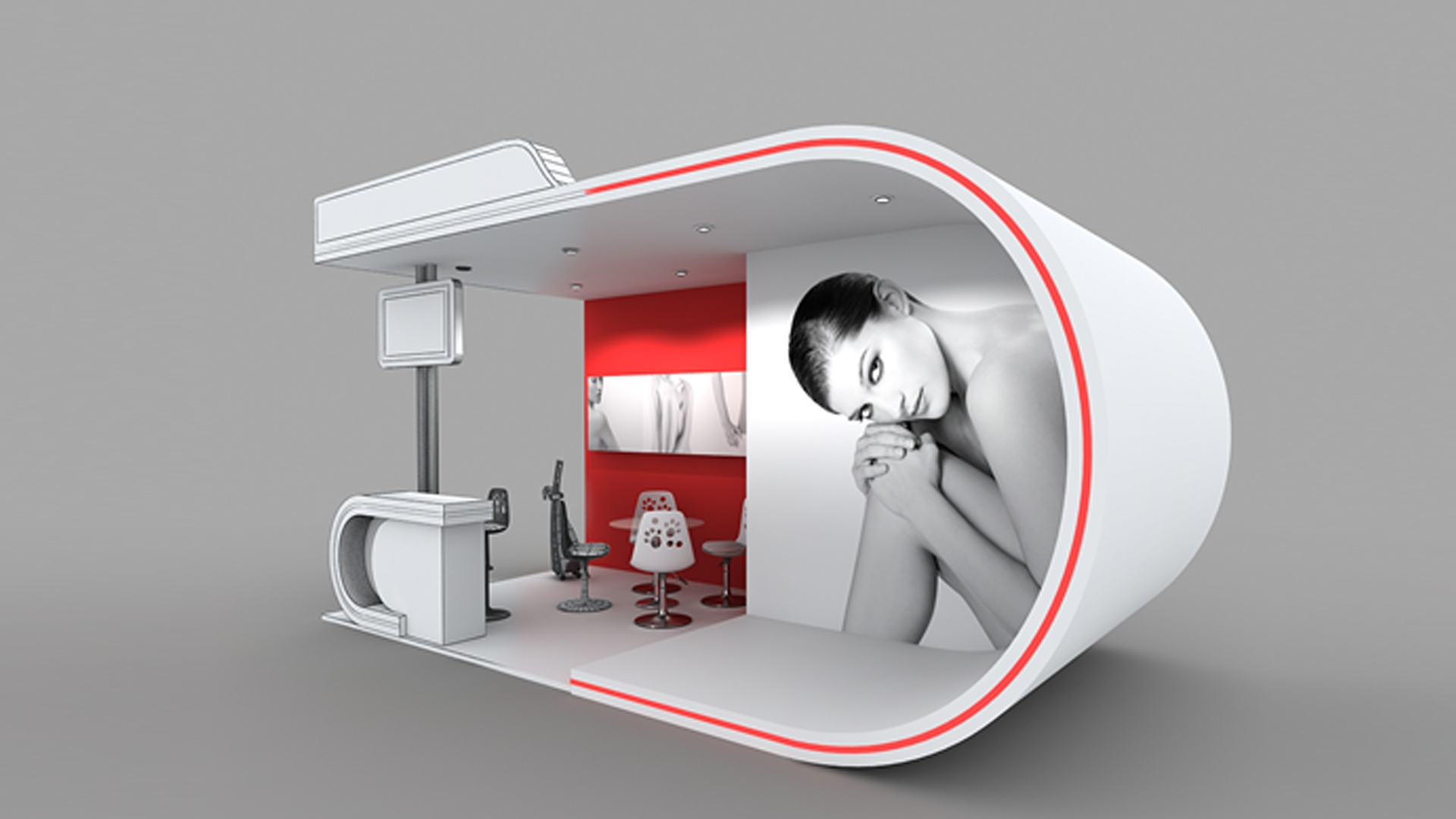
Regardless of the investment that will be made in a certain fair stand or the choice of the fair to be attended, there are a number of aspects to consider that are essential when it comes to successfully completing the design of a stand.
On the other hand, we must not lose sight of the fact that it is not only about a space, but also about maximizing an experience that will generate business opportunities, synergies and alliances. That is why the following questions were vital to achieve these objectives:
Orientation.
The location of the stand in a pavilion partly determines its visibility. It may not always have the best access from the main hallway. But that does not mean that the space is going to waste the flow of visiting public. A correct interpretation of the orientation of the space with respect to these public flows can make the difference between being a more accessible stand or not. Between being well oriented or not. Whether or not your claims are viewed from the greatest number of perspectives.
Construction regulations.
Each fair institution draws up its construction regulations. It is very important to pay attention to height limitations, setbacks, blind closings, roof closings, etc. A constant search, updating and correct interpretation of the regulations that we have for each event, will avoid unnecessary annoyances such as the rejection of a project by the technical services of the fair organization.
Distribution.
For non-expert eyes this issue could go unnoticed but it is very important to have a good organization of the different functionalities in space. No m² should be wasted, but the passage between the different construction elements and the furniture arranged by the stand cannot be allowed to cause obstructions or uncomfortable discomfort. The general distributed set should be presented well ordered, clean and consistent with customer needs and construction needs.
Claims.
Capturing the attention of visitors to the fair is one of the main keys for the stand to be successful. This can be done constructively, using height rigging or totems, for example, using large format graphics, or with the use of audiovisual technologies (modular LED screens, videowalls, transparent screens, mapping, touch walls, tablets with apps interactive, holographic projections, VR …). Another attraction, mainly used in events aimed at the general public, is the use of animation staff, the gift of promotional material at the stand, tastings of all kinds (popcorn, ice cream, soft drinks …) and / or the invitation to demos of the product on site.
Product display.
The activity of a customer or a sector defines a specific product. One of the basic pillars of a stand on the way to demonstrative success is the presentation of that product. Each case will determine the needs. It can be a product sheltered behind a glass barrier, to be handled only by the professionals of the brand, or it can be designed to be touched or put into operation by visitors to the stand. Its dimensions and weight will also determine the technical way of presenting it (podiums, exhibitors, urns, showcases, niches, overstays …). What has always to be considered is that the product is the most important thing, the reason why a corporate decoration is suitable is so that it serves as a packaging to present that product as it deserves.
Corporate image.
Many firms have a detailed brand branding in which the relationship of the logo with respect to the visual spaces, its range of primary and secondary colors, the main claim are perfectly defined… A careful materialization of these concepts supported in the appropriate construction style will clearly transmit the values of the brand depending on the issue (innovation, sustainability, firmness …).
Constructive style.
The imagination and the variety of shapes adaptable to a design will bring that differential fact that makes a stand a genuine construction. Smooth, curved or sinuous shapes convey great aesthetic beauty, but straight and geometric shapes can also be very suitable solutions to conceptualize. Sometimes the solution is in the minimalism of the forms, and other times in a virtuous complexity.
Materials.
There are different successful combinations of materials. From the basics of carpet and paint to the inclusion of more noble materials (melamines, natural woods, fabrics, metals and sheets, methacrylates, crystals, …). If the budget allows it, introducing some even innovative material can be a great success. On the other hand, if the main objective is the design of ecological stands, it will be necessary to propose sustainable construction materials that are reusable. Do not forget about the floor, it is more important than a priori it seems and it can tarnish or improve the design of a stand.
Decorative style.
The ability to stimulate the senses with a few small details is a good way to achieve that the different spaces of a stand reach their uniqueness. The choice of furniture, decorative lamps, or some color notes brought about by the use of plants and flowers, as well as decorative figures, will provide this final touch that makes a project “go through the eyes” and make a difference.
Illumination.
A good project if it does not have good lighting languishes. Not only should you avoid areas that become shady or poorly lit, but you must know how to manage the different options for each purpose. We are no longer talking only about cold or warm light, but about options such as spotlights to illuminate spatially from height, spotlights for point lighting, recessed spotlights to create atmospheres, lighting tinted with color filters, robotic lighting, decorative LEDs, backlit … there are many resources to stage the built space.
Without a doubt, following these guidelines you will make your stand one of the best stands at the exhibition and even include you in the gallery of award-winning stands at that exhibition or event.
share:

Copyright © 2024 Expomedia Comunicación S.L. Todos los derechos reservados.
Copyright © 2021 Expomedia Comunicación S.L. All rights reserved.
